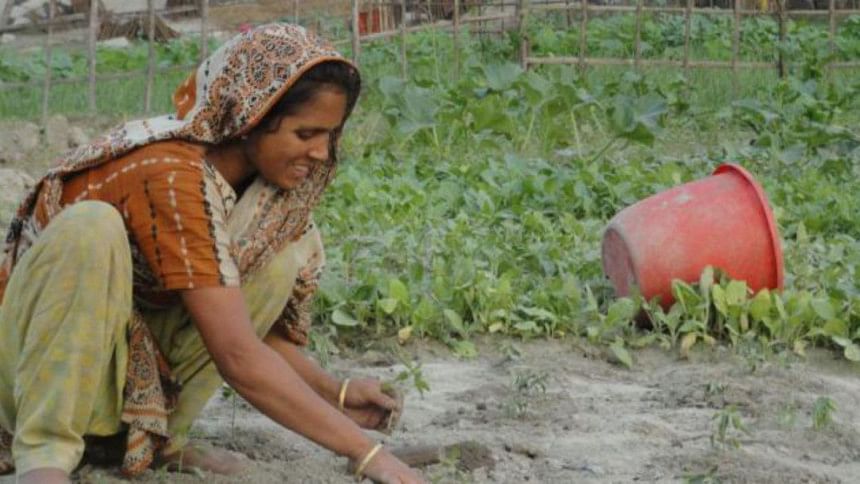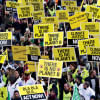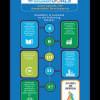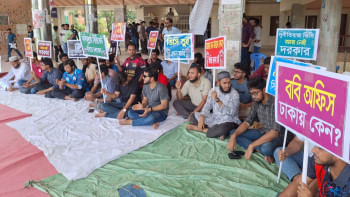SDG Targets: Can we get there by 2030?

The title of this essay may raise a few eyebrows in Bangladesh. Bangladesh has already embraced the Sustainable Development Goals (SDGs), and there is no doubt that the government and civil society are marching ahead to reach the various targets. However, like all long marches, this journey too has many milestones, and possibly detours and roadblocks on the way; so it is imperative that all systems be checked periodically and mid-course corrections be made accordingly. And last, but not the least, it is fair to ask, are we embarking on a journey that is achievable and measurable?
A conference was recently organised in Washington, DC by South Asian Network on Economic Modeling (SANEM) on July 12, 2017. I am referring to the SANEM-North America Discussion Forum 2017 "South Asia at a Development Crossroads" organised in collaboration with the World Bank Group and attended by distinguished economists, development specialists, and graduate students from major universities of North America. The keynote speaker at this session, Prof Selim Raihan, and others at the conference raised a key issue which is on all our minds: Is GDP growth sufficient to eliminate poverty, level income distribution and ensure equal opportunities by 2030 in countries of South Asia which face strong headwinds because of weak political institutions, entrenched socioeconomic forces, and the realities of age-old cultural values?
From the outset in 2016, three overarching challenges emerged for countries which signed on to the SDGs: prioritisation, monitoring and evaluation (M&E), and financing. Much has been said about the serious shortfall in financing SDGs in Bangladesh. In a paper entitled Financing of SDGs in Bangladesh, Prof Bazlul Haque Khondker has shown the need to explore the various financing options with a clear-cut policy formulation. Are we ready for greater infusion of foreign direct investment (FDI)? Or offer further incentives to harness the energies of the private sector through various private-public partnership (PPP) projects?
Earlier this year, the Planning Commission published the results of a study to identify the roles and responsibilities of various ministries and divisions in the implementation of SDGs, as well as the shortcomings inherent in monitoring and evaluation of this undertaking. The study, Data Gap Analysis of SDGs: Bangladesh Perspective, reveals an interesting issue. The government and its agencies are still at a loss in terms of coming to agree on a unifying theme to manage the "synergies" (targets that reinforce each other) as well as "trade-offs" (targets that conflict with each other) and "enablers" (targets that are preconditions for others).
Of the 241 indicators of SDGs, the Planning Commission study indicates that data related to 70 indicators (or 29 percent) is readily available and that of 63 (26 percent) is not available. Data for the remaining 108 (45 percent) is partially available. However, data gap for some of the SDGs is more acute than others. In terms of data gap, goal 12, "Ensure sustainable consumption and production patterns," ranks highest since 69 percent of data of indicators related to this goal is not currently available. This is followed by data gaps in measuring and monitoring goal 14, "Conserve and sustainably use the oceans, seas and marine resources," and goal 13, "Take urgent action to combat climate change and its impact." In view of these unmet needs, the government must soon outline a game plan to address the data gaps.
At the recent conference organised by International Sustainable Development Institute (ISDI) at Harvard University in May 2017, speakers representing the government of Bangladesh were candid about another obstacle that we face. Of the 241 indicators, many will be left behind as we march ahead in the coming years. The most difficult task is to work with the stakeholders to zero in on the laggards and come to a consensus on the trade-offs between various goals and targets. Who makes the decisions and what is the process? Is it just a technical exercise of costs and benefits, or a more inclusive process with consultations and participation of civil society?
The urgency and immediacy for dialogue in cases of "trade-offs" mentioned in the aforementioned GOB document are illustrated by the recent inconclusive national debate on the need for more power plants. The Rampal power plant brought this debate to the attention of the global sustainable development movement. But as Dr Farashuddin at a recent book launch at Policy Research Institute (PRI) openly asked, "Why should Bangladesh pay the price for the mistakes of other nations which contributed to global warming?" Should Bangladesh, as a country likely to be seriously impacted by climate change, also go the extra mile to explore renewable sources of energy? Can the developing countries of South Asia afford to bear the greater cost of cleaner energy?
The SDG Secretariat in the Prime Minister's Office is entrusted to work with government agencies and civil society to prioritise the measures, as well as to track and monitor our progress. While some special programmes initiated by this or future governments will help us achieve some of the SDGs well in advance of 2030, others may need a boost in the coming years, and the Secretariat has a heavy burden to shoulder. Is the SDG Secretariat ready to work in identifying projects in partnership with NGOs or the private sector? To adopt and adapt best practices in monitoring important goals (for example, elimination of poverty and inequality (goal 1), and set up a system to raise a "red flag" if we are not on track to achieve this goal)?
But these findings should not be a cause for alarm since Bangladesh is not alone as it stands at these crossroads. Fortunately, we can learn from other South Asian nations, and calibrate and fine-tune our policy steps as we move forward. And the potential gains from an action plan based on key SDG policy strategies that build upon the interrelationships between the goals and targets are significant. Results from a simulation study done for five South Asian countries by Prof Selim Raihan and others suggest that strategic policy priorities of sustained, broad-based and job-creating rapid economic growth through industry-oriented structural transformation, and addressing food security and hunger with agricultural productivity improvements through sustainable agriculture could lift an additional 71 million people out of poverty, create 56 million additional jobs in South Asia and boost GDP by 15–30 percent by 2030 over and above the business-as-usual scenario. However, for Bangladesh, this growth presupposes eight percent GDP growth and commensurate 20 percent increased investments in utilities, transport and social infrastructure. A pretty daunting task indeed!
Abdullah Shibli is an economist and works in the ICT industry.










Comments